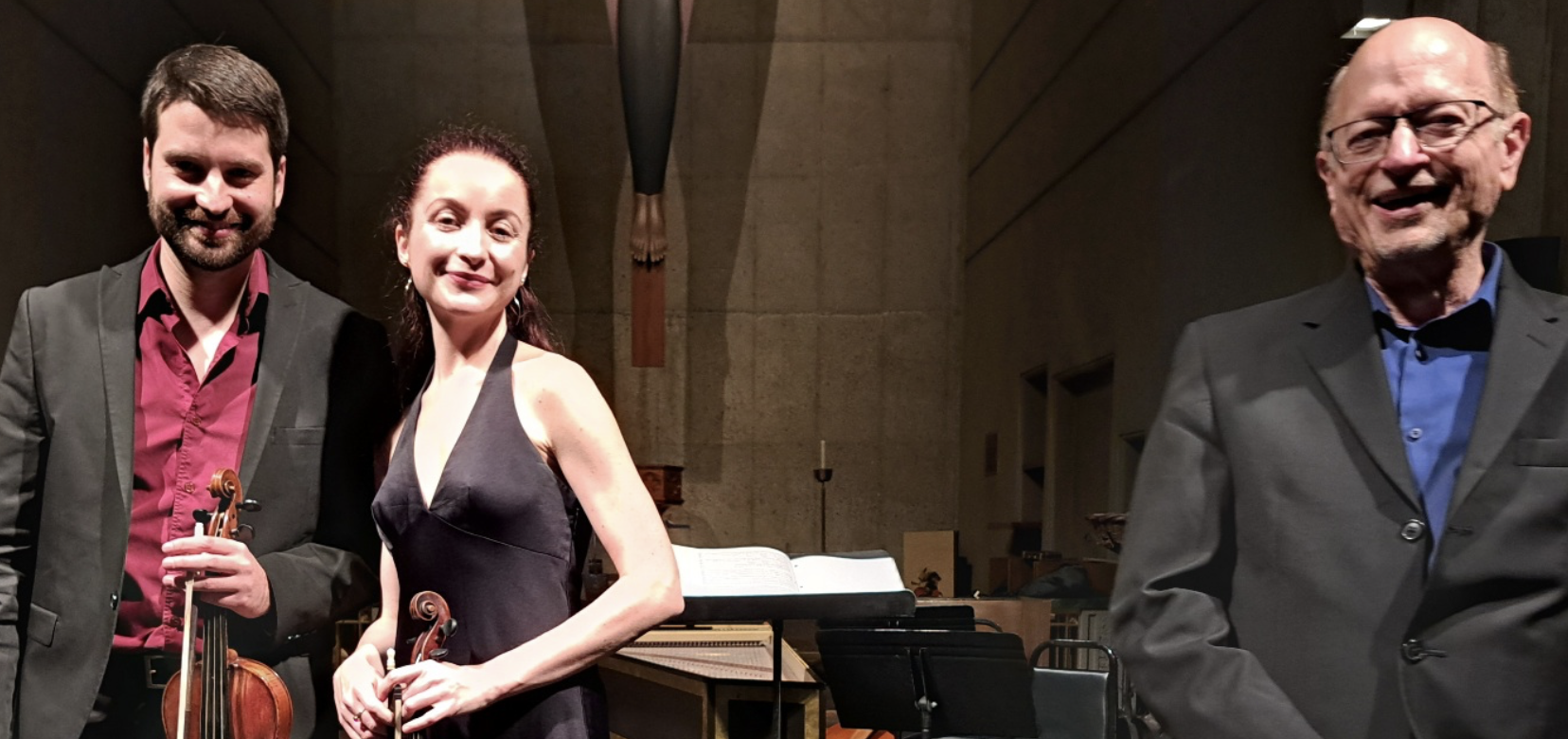|
Symphony
SRS SEASON ENDS WITH RESOUNDING TA-TA-TA-BANG
by Terry McNeill
Sunday, June 1, 2025
Symphony
YOUTHFUL VIRTUOSITY ON DISPLAY AT USO'S MAY CONCERTS
by Peter Lert
Saturday, May 17, 2025
Symphony
MYSTICAL PLANETS AND LIVELY GERSHWIN ORTIZ AT FINAL SRS CONCERT
by Peter Lert
Sunday, May 4, 2025
Symphony
VSO'S CONCERT MUSIC OF TIME, MUSIC OF PLACE
by Peter Lert
Sunday, April 27, 2025
Choral and Vocal
VOCAL ELEGANCE AND FIRE AT THE 222'S RECITAL APRIL 26
by Pamela Hicks Gailey
Saturday, April 26, 2025
CANTIAMO SONOMA SINGS AN INSPIRED GOOD FRIDAY MOZART REQUIEM CONCERT
by Pamela Hicks Gailey
Friday, April 18, 2025
DRAMATIC SHOSTAKOVICH SYMPHONY CLOSES PHILHARMONIC'S 25TH SEASON
by Terry McNeill
Sunday, April 13, 2025
LARGE COLLEGE OF MARIN AUDIENCE GREETS STOPHER ARTISTRY
by Terry McNeill
Saturday, April 5, 2025
Chamber
FRISSON DELIVERS SHIVERS OF DELIGHT
by Abby Wasserman
Sunday, March 30, 2025
OLD AND MOSTLY NEW IN SRS MARCH CONCERT IN WEILL
by Peter Lert
Saturday, March 22, 2025
|
 |
 T. Iliev T. Chulochnikova J. Thomas Oct. 25 |
BAROQUE EXTRAVAGANZA AT AMERICAN BACH MARIN CONCERT
by Abby Wasserman
Friday, October 25, 2024
The original home of American Bach (formerly American Bach Soloists) was St. Stephen’s Episcopal Church in Belvedere, and they have performed there every season since, and were there on Oct. 25 to launch the company’s 36th season with a program called Baroque Extravaganza. The title was no exaggeration.
To perform five works, conductor Jeffrey Thomas assembled a superb ensemble: violinists Tatiana Chulochnikova, Tomà Iliev, Wilton Huang, Noah Strick and Gail Rosa Hernandez; violists Ramón Negrón-Pérez and Yvonne Smith; cellist Gretchen Claassen, Corey Jamason (harpsichord) and Steven Lehning, contrabass. The compositions by Schmelzer, Biber, Tartini, Telemann and Bach had, in their time, issued instrumental challenges to musicians’ techniques and listeners’ ears. In an introduction, Mr. Thomas described the theme of the evening as “a peculiar indulgence.” In other words, nothing was too extravagant in the Baroque middle period. Along with beautiful harmonies and stately dance rhythms, composers took advantage of freedom to experiment with wild whirlarounds, mixed-up meter, crazy cacophony, and imitations of swordplay and war.
The first extravagance on the program, Schmelzer’s Balletto a 4, Die Fechtschule (The Fencing School), was a pulse-racing evocation of a fencing match. Schmelzer was an Austrian violin virtuoso who wrote some of the earliest string sonatas. His music introduced the fencing school scene with a stately dance and scenes that were almost filmic: I could see the crowd pressing forward, some wagering on the outcome; the entrance of minor royalty; and the duel itself: two swordsmen thrusting and parrying until a victor was declared. Finally, a post-combat visit to the ‘bader’ (barber-physician in the Austrian dialect) to bind up wounds. Schmelzer, the leading Austrian composer of his generation, died during an epidemic of the plague at the height of his professional career.
Biber, who was influenced by Schmelzer, evoked a scene from the second Hundred-Year war in the stunning Battalia à 10 (1673). Soldiers lounge at their stations awaiting the next skirmish, imbibing quantities of wine and turning nostalgic. One of them sings a sweet tune from his homeland, a second chimes in with his favorite song, and another and another until there are seven different songs layered over one another. The resulting cacophony was ear-splitting, outrageous and funny. That’s Biber; he wasn’t afraid to try anything and his music is always fresh and surprising. Suddenly, approaching drums suggested a call to arms. To make the sound of snare drums, Mr. Lehning tucked paper into the strings of his contrabass while Mr. Strick’s agitated violin approximated the racing pulses of soldiers anticipating battle. But the drums recede and the men, relieved, have a few more drinks and nod off to sleep. They awaken to musket fire and are forced to fight. The final Aria describes the aftermath of carrying the dead and wounded from the field. The performance was a tour-de-force.
Next came a beautiful performance of Tartini’s Violin Concerto in A minor, a piece with very little orchestration as it is focused on the soloist. Ms. Chulochnikova took the lead while Mr. Iliev and Mr. Huang joined her for gorgeous duets and trios. With feather-light trills and burnished double-stops, Ms. Chulochnikova played without score and her virtuosity and sensitivity were transporting.
Following intermission, the ensemble gathered for Telemann’s La Bizarre Overture in G major. Mr. Thomas provided verbal clues to this intricate piece: it seems much in it was bizarre (unusual, unprecedented) for the era. In some places the musicians played in different meters (the notes don’t line up) and the Sarabande movement was heavily ornamented, unusual for a sarabande. In the finale Mr. Thomas advised us, and Mr. Iliev demonstrated, the violin imitates the chirping of a nightingale. The music was opulent, with stately and perky sections, and a chorus of birds, a dance in waltz time, slurred notes, and that chirping, all wonderfully entertaining.
The final selection was Bach’s Concerto for Three Violins in D major, featuring Mr. Iliev, Mr. Huang and Mr. Strick. Beforehand, Mr. Thomas confided to the audience that this piece might be his favorite Bach composition. I concur; if one violin is delightful, three are angelic. As their voices joined one another, each slightly different in tone and timbre, my foot began to tap. There were ethereal harmonies and compelling rhythms, a feeling of perpetual motion, and thrilling chromatics. Everything on this program was a tour-de-force, and at the close of the Bach concerto, the musicians were regaled with a standing ovation.
An informal Q & A session with Mr. Thomas, Mr. Iliev and Ms. Chulochnikova followed. A handful of audience members stood at the edge of the stage to ask questions and express gratitude for a memorable evening. I left the church feeling elevated.
|

